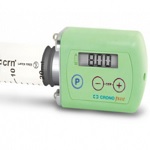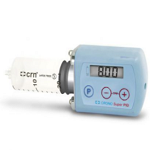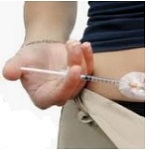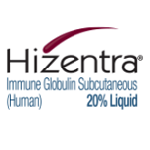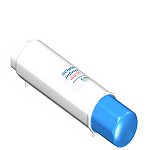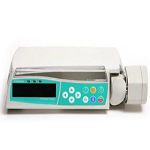
Instructions for Subcutaneous Injections
Subcutaneous medication administration is a common route of administration of medications in both the hospital and community settings. It is often used in patients who are unable to take medication by mouth, those that have poor gut absorption, nausea and vomiting or those that require a continuous infusion in the community. Indwelling subcutaneous catheter devices may assist in medication delivery and decrease trauma, distress and discomfort for the patient.
An indwelling subcutaneous catheter used for administration of medication subcutaneously. Medications commonly administered via an Insuflon™ include Granulocyte Colony Stimulating Factor (GCSF), Cytabarine (Ara-CTM), Enoxaparin (ClexaneTM), Insulin and Morphine.
This catheter system requires a needle and syringe to administer the medication through the device. A needleless closed indwelling subcutaneous catheter system, which is used for subcutaneous administration of medications, either as a continuous infusion or for breakthrough/bolus doses. Medications commonly administered via a needleless subcutaneous catheter can include opoids, benzodiazepines and anti-emetics.
This device can be attached to a syringe driver for continuous infusions of prescribed medications either on an Alaris Asena GH MK III (inpatient use) or a NikiT 34 (for either inpatient or outpatient use).
Select Instructions From the List Below
